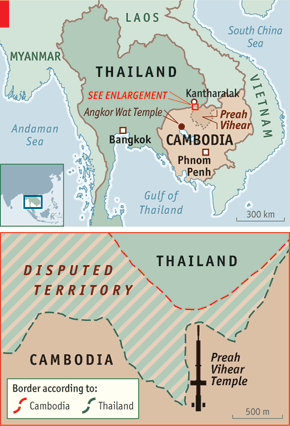Border disputes have always been an issue in many regions of the globe. These disputes tend to lead to the war and numerous military conflicts that are taking place now can be regarded as bright examples. Cambodia and Vietnam are two countries that have a long history of the border dispute. The dispute started at the beginning of the 20th century and it is still unresolved. Yoosuk (2013) identifies two major reasons for the dispute: ambiguity in demarcation and international boundary settlements and political turmoil in both countries. It is possible to take a closer look at the two reasons to understand whether the dispute can be resolved in the nearest future.
In the first place, it is necessary to note that the dispute is rooted in quite vague border settlements that date back to 1900s. Between 1904 and 1908, Siam (contemporary Thailand) and France made certain settlements and in the 1960s Thailand claimed that there was no demarcation and the settlements were invalid (Yoosuk, 2013). According to the decision of the International Court of Justice in 1962, the Preah Vihear Temple was a part of Cambodia (“Q&A: Thailand-Cambodia temple dispute,” 2013). However, there was no clarity as to the territory around (or rather at the front) of the temple. This ambiguity led to growing tension between the two countries as each of them had a specific view on the border (see fig. 1).
The crisis took place in 2008 when Cambodia applied for the temple to be one of UNESCO World Heritage site. Thailand wanted to have it as a joint listing (“Q&A: Thailand-Cambodia temple dispute,” 2013). Soldiers from both sides moved to the border and there were a number of minor conflict with a serious military conflict in 2011 when thousands of civilians had to move from the area (“Temple trouble,” 2011). The conflict was again resolved and the territory was claimed to be a part of Cambodia.

It is important to add that the border dispute is not accelerating due to both side’s desire to enlarge their territories. The temple has certain political and spiritual meaning for both countries. Thus, Thai people see the temple as one of the most significant spiritual destinations and cultural heritage of their nation. At the same time, the Cambodians give it even more meaning as the temple is a symbol of their struggle for independence. More so, they see the temple as a reminder of Thailand’s expansion and the fact that fighting with the country made Cambodia too weak to resist French conquest (Yoosuk, 2013). Clearly, both sides want to have the temple as a symbol of their victory and many political forces (in both countries) make use of the dispute to earn political power and support among people.
In conclusion, it is possible to note that the dispute over the Hindu temple between Cambodia and Thailand was partially resolved in 2013. However, the tension is likely to accelerate over time as the temple has political, spiritual, religious and cultural significance for both sides. It is also clear that it is crucial to look for more effective tools to address such issues so that they could be resolved once and for all. Otherwise, there are chances that the military conflicts will turn into large-scale wars in the region or even into the next World War.
Reference List
Q&A: Thailand-Cambodia temple dispute. (2013). BBC. Web.
Temple trouble. (2011). Economist. Web.
Yoosuk, U. (2013). The Preah Vihear temple: Roots of Thailand-Cambodia border dispute. International Journal of Asian Social Science, 3(4), 921-929.